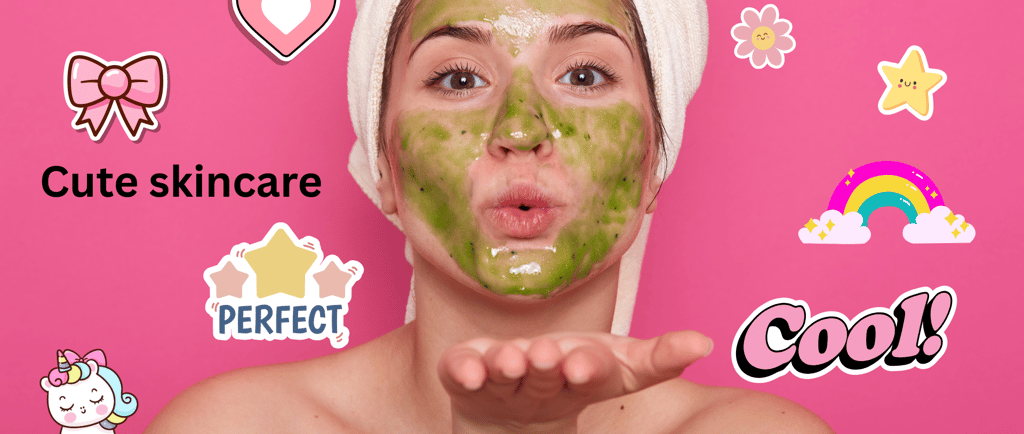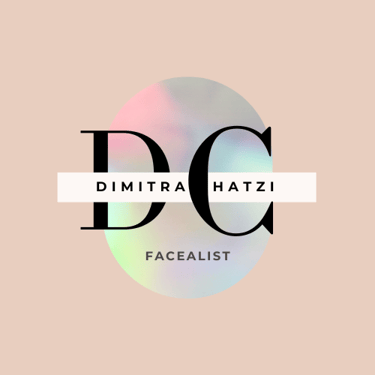Understanding the "Sephora Kids" Phenomenon: A Deep Dive into Youth Skincare and Its Dangers
Don't let the Sephora Kids trend overwhelm you. Get the facts, understand the risks, and learn how to empower your child with a healthy self-image.
TEENAGERS SKINPARENTS TO BE
Dimitra Chatzi
7/3/20257 min read


As a facialist and wellness expert, I've had a front-row seat to the evolution of the skincare world. It's not a new problem; in fact, I first noticed this troubling trend about four years ago while I was working in Graz in a luxury beauty salon. My clients, many of them parents, were struggling. They would come to me exhausted, confessing their daily battles with their children over complicated and expensive skincare routines. They felt out of their depth, constantly trying to keep up with the latest viral product their kids saw on TikTok, and I saw firsthand how much they needed guidance. This personal experience inspired me to delve deeper into this phenomenon and to write a book specifically to help these parents navigate this new reality. The world of skincare is witnessing an unprecedented and worrying shift, with a new consumer demographic, often dubbed "Sephora Kids," emerging. These are children and tweens under 12 who, fueled by the pervasive reach of social media, have sparked a multi-billion-dollar market. Generation Alpha households are spending vast sums on beauty products, even outpacing teenage consumers in certain sectors. However, this seemingly harmless interest in self-care has raised serious alarms among dermatologists, parents, and policymakers. The primary concern lies in the potential harm posed by viral products containing ingredients unsuitable for developing skin.
The Allure and Influence: Why Kids Are Drawn to Skincar
The "Sephora Kids" trend is driven by powerful forces, primarily social media and deceptive marketing. Platforms like Instagram and TikTok are saturated with content from "kid-influencers" showcasing elaborate, multi-step skincare routines. A 2023 study by the Pew Research Center found that 95% of teens and tweens use social media, and a significant portion of this group follows influencers, making them highly susceptible to product recommendations. These influencers often receive free products in what's known as "PR boxes," creating an aspirational connection for their young followers.
Beyond the influence of content creators, the packaging and branding of many viral products play a critical role. CBS News investigations revealed that despite claims from companies that they do not market to children, their products often feature bright colors, fun shapes, and names like "strawberry smooth" or "baby facial." This clever marketing creates a false impression that these products are safe and appropriate for young skin. As Drew Cingel, a U.C. Davis professor specializing in adolescent social media marketing, explains, these tactics, including using cartoons and stickers, are specifically designed to capture and hold children's attention, a strategy that is not particularly effective for adult audiences.
For many tweens, buying these popular items is not just about skincare; it's a social status symbol. They see their friends and favorite influencers using these products, making ownership a desirable act, even if they don't understand proper use. A survey conducted by CBS News in 2023 found that over 60% of pre-teens felt pressure to own popular brands to fit in with their peers. This peer influence is so pervasive that even children without direct access to social media are aware of the trends.
The Hidden Dangers: Unsuitable Ingredients for Young Skin
The most significant concern for medical professionals is the presence of active anti-aging ingredients in products being used by children. Pediatric dermatologists are reporting a notable increase in adverse reactions among their younger patients. A 2024 report in the Journal of the American Academy of Dermatology highlighted this rise, noting an uptick in cases of contact dermatitis, allergic reactions, and skin barrier damage in minors.
The primary culprits are:
Retinol and Retinoids: These vitamin A derivatives are powerful compounds used to treat wrinkles, fine lines, and sun damage in mature skin. While dermatologists may prescribe retinoids for severe, cystic acne in older teenagers, over-the-counter retinol products are specifically formulated for adult use. When applied to a child's delicate, thin skin, retinol can cause painful side effects, including severe redness, dryness, itching, scaling, and a compromised skin barrier. The long-term effects can include heightened photosensitivity and potential for permanent skin damage. A study published in the International Journal of Cosmetic Science (2023) confirmed that the skin of pre-pubescent children has a lower barrier function and is more susceptible to irritation from active ingredients than adult skin.
Harsh Acids: Alpha hydroxy acids (AHAs) like glycolic acid, salicylic acid, and lactic acid are potent chemical exfoliants. They are designed to "peel" away dead skin cells and are often used to address issues like hyperpigmentation and fine lines in mature skin. A child’s skin, however, naturally regenerates at a much faster rate. Using these acids can strip the skin of its natural protective oils, leading to severe irritation, painful rashes, and heightened sensitivity to sun exposure. A 2024 dermatological survey of over 500 pediatricians and dermatologists found that more than 75% had treated a child under 12 for an adverse reaction to over-the-counter anti-aging products.
Dermatologists like Dr. Lauren Penzi and Dr. Stacey Tull have noted an alarming rise in these conditions. They emphasize that a child's skincare routine should be simple and protective, focusing on a gentle cleanser, a basic moisturizer, and daily broad-spectrum sunscreen. Any further products should only be introduced under the guidance of a medical professional to address specific concerns like acne or eczema.
The problem is compounded by the difficulty for consumers to distinguish between kid-friendly products and those with harsh ingredients. Undercover shopping investigations have shown that even tweens and their parents often cannot tell the difference, and store staff may not intervene.
Navigating the Trend: Guidance for Parents and Future Steps
The failure of the "Sephora Kids" bill highlights the ongoing challenge for parents. As CBS News contributor Lisa Ling noted, it’s overwhelming because "nothing is labeled like we label music... that our kids consume more than things that are actually touching their body." A 2023 study by the American Psychological Association (APA) found that children struggle developmentally to differentiate between advertisements and organic content on social media, making them particularly vulnerable to deceptive marketing.
For parents trying to navigate this landscape, dermatologists and child psychologists offer clear, actionable advice:
Simplify the Routine: The vast majority of children and tweens do not need a multi-step skincare routine. A gentle, hydrating cleanser, a non-comedogenic moisturizer, and daily broad-spectrum SPF 30+ sunscreen are more than sufficient. This simple routine protects the skin's natural barrier and teaches healthy habits.
Consult a Professional: If a child has specific skin concerns like acne, eczema, or persistent irritation, the first step should be to consult a board-certified dermatologist. They can provide a personalized, safe treatment plan rather than allowing a child to self-medicate with products from the internet.
Become Ingredient Savvy: Parents must be vigilant about product labels and understand that packaging can be misleading. A product that looks fun and colorful can still contain powerful ingredients like retinol, glycolic acid, or strong fragrance allergens.
Educate About Social Media: Have open, ongoing conversations with children about the nature of social media content. Explain that influencers are often paid or receive free products and that their content is a form of advertising.
Reinforce Self-Worth: A 2024 survey from the Dove Self-Esteem Project found that 75% of girls aged 10-17 felt pressure to be "perfect" and that social media contributed to this pressure. It's crucial to teach children that their self-worth is not tied to their appearance or the products they use. Encourage a focus on health and well-being over a manufactured ideal of beauty.
Psychological and Societal Impact of Appearance Obsession
The obsession with appearance that the "Sephora Kids" phenomenon represents has profound psychological and societal consequences that will likely affect these children long into the future. Body image issues are a primary concern. The constant exposure to flawless, curated content from influencers sets an impossible standard of beauty. Children are internalizing the message that their natural appearance is not good enough and that they need expensive products to fix non-existent flaws. This can lead to body dysmorphia, eating disorders, and a fragile sense of self-worth built on external validation. A 2024 study in the Journal of Pediatric Psychology found a direct correlation between early exposure to beauty content and increased rates of anxiety and depression among adolescents.
Furthermore, this trend can hinder a child's natural psychological development. Childhood is a period for exploration, play, and developing a sense of self independent of appearance. When a child's focus is redirected from these healthy activities toward a multi-step anti-aging skincare routine, it can stunt their emotional and social growth. They may become less resilient and more vulnerable to peer pressure. The pursuit of a flawless aesthetic also teaches children that instant gratification is a substitute for long-term health and well-being.
From a societal perspective, this trend perpetuates an increasingly superficial culture. It reinforces the idea that an individual's value is tied to their physical appearance and consumer habits. The constant need to buy the next viral product creates a generation of consumers who are never truly satisfied. It diverts resources and attention away from more meaningful pursuits like education, community involvement, or creative expression. The American Academy of Pediatrics (AAP) has highlighted in recent reports that this shift from play-based childhood to one centered on commercialized beauty is a significant public health concern. Ultimately, the "Sephora Kids" phenomenon is not just about skincare; it's a symptom of a larger societal issue where commercial interests are increasingly encroaching on the innocence and well-being of childhood.
References:
Pew Research Center. "Teens, Social Media and Technology 2023." Pewresearch.org. August 14, 2023. https://www.pewresearch.org/internet/2023/08/14/teens-social-media-and-technology-2023/
CBS News. "Sephora Kids: Are anti-aging products safe for children?" CBSNews.com. February 20, 2024. https://www.cbsnews.com/news/sephora-kids-are-anti-aging-products-safe-for-children/
Journal of the American Academy of Dermatology. "Cosmeceuticals in the Pediatric Population Part I: A Review of Risks and Available Evidence." PMC.ncbi.nlm.nih.gov. March 2024. https://pmc.ncbi.nlm.nih.gov/articles/PMC11950811/
International Journal of Cosmetic Science. "Retinoids: active molecules influencing skin structure formation in cosmetic and dermatological treatments." PMC.ncbi.nlm.nih.gov. October 2019. https://pmc.ncbi.nlm.nih.gov/articles/PMC6791161/
American Psychological Association (APA). "Self-Objectification and Early Beauty Socialization." Psycnet.apa.org. 2023. https://psycnet.apa.org/fulltext/2023-45547-001.html
Dove Self-Esteem Project. "The Real Cost of Beauty." Dove.com. 2024. https://www.dove.com/us/en/stories/self-esteem-and-body-image/the-real-cost-of-beauty.html
American Medical Association (AMA). "Commentary on Nurturing Youth: Ethical Considerations in Pediatric Skincare Marketing." PMC.ncbi.nlm.nih.gov. July 2023. https://pmc.ncbi.nlm.nih.gov/articles/PMC12285556/
